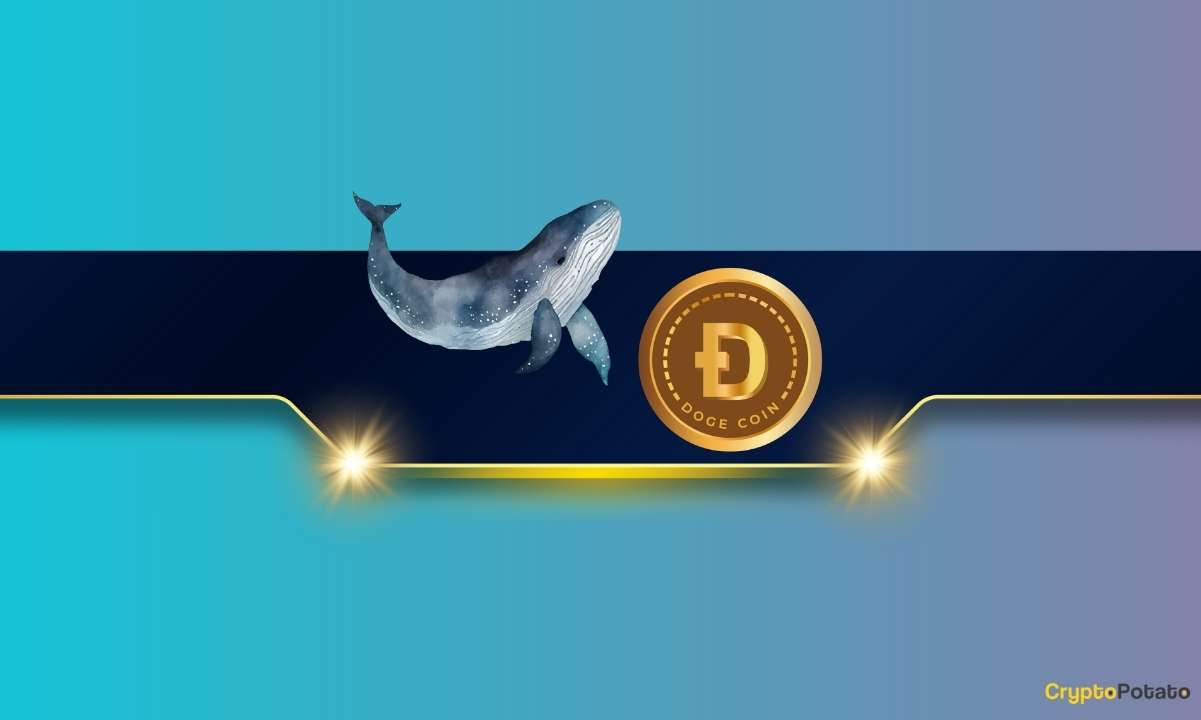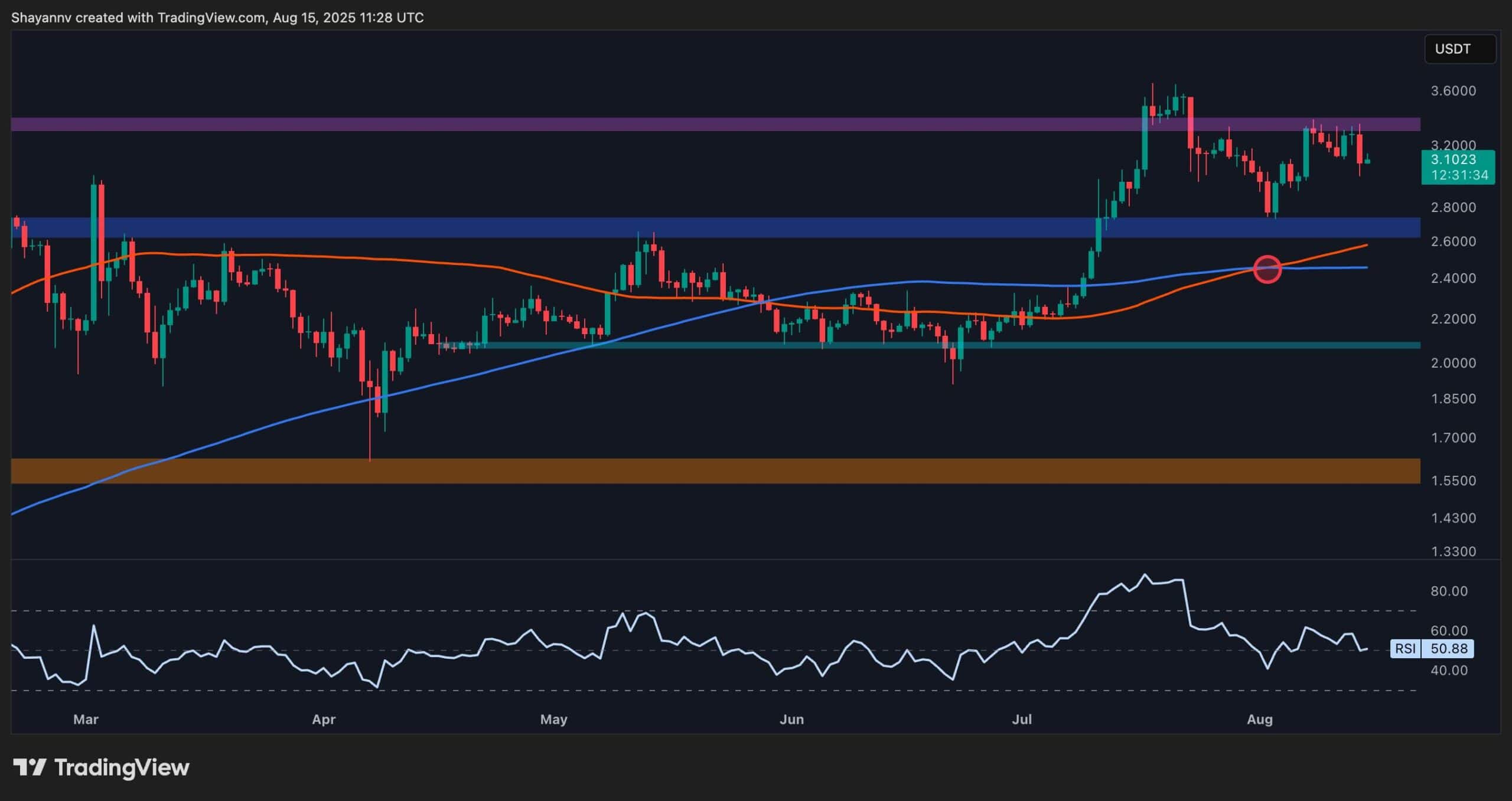Cryptocurrency
Are real world assets set to take market share?

The blockchain has seen many narratives over the years. Some of these have turned into actual use cases and continued with strength. But there is a new kid on the block, and they go by the name of real world assets (RWAs).
What are RWAs?
In simple terms, RWAs are tangible assets from the physical world that interact with the blockchain. The biggest assets being represented currently are real estate, private credit, gold and U.S. treasuries. But the ceiling for expansion is almost unlimited and this is certainly an area to look out for. It is reported that the overall Total Value Locked (TVL) for DeFi is roughly $38.8 billion, with a high of around $178 billion in November 2021, which illustrates a big potential opportunity for investors.
Real estate alone is seeing fewer complications in terms of process and is also negating the need for a middleman to see the deal out. Not only does it provide a more efficient solution but it is cost-effective too.
How do they work?
Like most assets, you can simply buy through a marketplace or vendor. RWAs are the same; the only difference is these are assets being brought onto the blockchain as opposed to being made new and this is known as tokenization.
In terms of formula, the price fluctuates just like most assets on the market, so if you were to buy a fractionalized piece of real estate, its price would change based on the market just like Bitcoin would. The choice of asset would depend on how this works as different protocols have different processes. Stablecoins as RWA would obviously be backed 1:1 by the U.S. dollar.
This means that you are just buying a digital version of the asset in essence and this is bound to you until you sell — similar to cryptocurrencies. If we take real estate as an example again, you would digitally own that property or at least a portion of that property depending on how much you invest.
The best part about bringing these assets onto the blockchain and being available to investors is that they can be fractionalized. For example: If Bitcoin was priced at $30,000 but you can’t afford it, you can buy a fraction of it instead. This is similar to how the price of gold works too, we have seen gold tokenized, and it is also one of the biggest tokenized assets on the market.
The tokenization of these assets allows a bigger pool for investors to choose from, providing more variety in their spread, especially when they are world-renowned assets such as real estate or gold.
How are they being accessed?
As these assets are on the blockchain, there obviously needs to be a way to access them. Luckily there are dedicated platforms to make this process as simple as possible. One that is truly providing a smooth process is Fluent Finance. They provide a two-way bridge between traditional finance (TradFi) and distributed ledgers (DeFi) via their advanced stablecoin protocol. There are also some other RWA providers, such as Ondo Finance (RWA marketplace), Maple Finance (private credit) and Centrifuge (RWA marketplace).
Access will only improve as adoption increases and RWAs provide a new market for those still within the Web2 space to move over — especially with the added benefits provided in terms of efficiency compared to the current state of ownership.
In terms of accessibility for users, this essentially means that anyone in the world can access this without an issue, even if these assets are typically not available to them such as someone in a small town in Nigeria buying U.S treasuries. This allows for everyone to be on an equal playing ground with essentially no limits or restrictions on availability. This also allows for investors to diversify their portfolios due to increased financial instruments, enabling a better investment/savings plan.
Things to keep in mind
There are obviously many positives with the digital world and RWAs are benefitting greatly from this; however, there are some things to look out for when navigating them.
Market movement is one area that many may not monitor closely enough. The reason for this is that some RWAs are directly linked to their own market. Unlike crypto, in these markets, there isn’t simply a price to monitor your assets. If you’re invested in real estate for example, this could vary on economic conditions, interest rates or even the type of property which can also fluctuate.
So, understanding the market you enter with RWAs is vital due to the potential complexities that other asset classes don’t necessarily experience. A final tip for anyone looking to get into RWAs would be to understand the potential barriers such as regulation or fragmentation. We know that regulation is a problem within the Web3 space already but RWAs will add complications.
As for fragmentation, this is a potential issue due to fractionalization, in which multiple people own a percentage of a bigger asset and as a result, decision-making can be more difficult. But this doesn’t always have to be a negative, as the decision-making and overall process could also be more efficient.
Conclusion
As the blockchain space begins to grow even more, it is expected that these processes will become even easier to use, especially for new adopters who are entering this space as it can be a daunting process. This combined with new platforms and constant blockchain improvements, Web2 and Web3 integration will likely be adopted at greater levels, and RWAs will enter as a whole new market regime.
The added value from such efficient processes will be a massive factor in adoption levels — especially with the removal of the middleman that’s required with many processes within the real world and Web2 space (like with real estate, where it can take months to complete).
RWAs provide a whole new level of sustainability and could be a leading narrative in the Web3 space for years to come. It is certainly an exciting time to be involved and it will be interesting to see how it evolves.
The information provided here is not investment, tax or financial advice. You should consult with a licensed professional for advice concerning your specific situation.
Ilias Salvatore is the brand/product lead of Flooz.xyz — the easy place to buy, trade and track crypto with real-time data and alerts.
This article was published through Cointelegraph Innovation Circle, a vetted organization of senior executives and experts in the blockchain technology industry who are building the future through the power of connections, collaboration and thought leadership. Opinions expressed do not necessarily reflect those of Cointelegraph.
Cryptocurrency
Ethereum Foundation, Whales, and Hackers: What’s Driving the ETH Sell-Off?

TL;DR
- Whales, hackers, and the Ethereum Foundation wallets moved over $500M in ETH through large sales and withdrawals.
- Ethereum transfers rose to 4.6M ETH, nearing the monthly high of 5.2M recorded in July.
- Staking inflows hit 247,900 ETH, the highest in a month, locking more supply from trading.
Large Withdrawals and Whale Activity
Ethereum (ETH) has seen heavy movement from major wallets over the past few days. On-chain data from Lookonchain shows a newly created wallet pulled 17,591 ETH, worth $81.62 million, from Kraken in just two hours.
Over three days, two new wallets withdrew a combined 71,025 ETH, valued at $330 million, from the exchange.
One of these wallets, address 0x2A92, has withdrawn 53,434 ETH, worth $242.34 million, in two days. This includes a recent purchase of 30,069 ETH, valued at $138.46 million, during a market drop.
Major ETH Holders Offload Millions Amid Price Rally
In contrast, several separate entities have been disposing of some ETH holdings. A wallet tied to a hacker address 0x17E0 sold 4,958 ETH for $22.13 million at $4,463, securing a profit of $9.75 million. Earlier this year, the same address sold 12,282 ETH at $1,932 and later bought back part of the amount at higher prices.
A different whale sold 20,600 ETH for $96.55 million over the past two days, generating a profit of more than $26 million after holding the position for nine months.
Meanwhile, an Ethereum Foundation-linked wallet, 0xF39d, sold 6,194 ETH worth $28.36 million in the last three days at an average price of $4,578.
Recent sales from the same wallet included an additional 1,100 ETH and 1,695 ETH for over $12.7 million combined.
The #EthereumFoundation-linked wallet(0xF39d) sold another 1,300 $ETH($5.87M) at $4,518 ~11 hours ago.
Over the past 3 days, this wallet has sold a total of 6,194 $ETH($28.36M) at an average price of $4,578.https://t.co/4hfCWymHVG pic.twitter.com/ErUyEY8SJy
— Lookonchain (@lookonchain) August 15, 2025
Network Activity on the Rise
CryptoQuant data shows Ethereum’s total tokens transferred have been climbing since August 9. After ranging between 1 million and 3 million ETH through late July and early August, transfers have risen to 4.6 million ETH, approaching the monthly high of 5.2 million recorded in mid-July. This increase has occurred alongside a price rally from about $3,400 to $4,600.
Interestingly, staking inflows generally stayed between 20,000 and 80,000 ETH per day over the past month. On August 14, inflows jumped to 247,900 ETH, the highest in the period.
At the time, ETH was trading near $4,600. Large staking deposits reduce the amount of ETH available for immediate trading, as staked coins are locked for a set period.
In the meantime, ETH trades at $4,647 with a 24-hour volume of $68.25 billion, down 2% on the day but up 19% over the week.
Binance Free $600 (CryptoPotato Exclusive): Use this link to register a new account and receive $600 exclusive welcome offer on Binance (full details).
LIMITED OFFER for CryptoPotato readers at Bybit: Use this link to register and open a $500 FREE position on any coin!
Cryptocurrency
Massive DOGE Whale Activity Hints at $1 Breakout

TL;DR
- Whales bought two billion DOGE this week, lifting their combined holdings to 27.6 billion coins.
- A single 900M DOGE transfer worth $208M to Binance drew attention to large exchange movements.
- DOGE broke key resistance, with momentum building for a possible push toward the $1 price mark.
Price and Market Moves
Dogecoin (DOGE) traded at $0.23 at press time, slipping 4% over the past day but still showing a 2% gain for the week. Daily turnover came in at about $6.18 billion.
Meanwhile, the broader crypto market saw over $1 billion in liquidations. Hotter-than-expected US Producer Price Index data pushed traders to scale back expectations of a near-term Federal Reserve rate cut. DOGE had roughly 290,500 coins liquidated during the sell-off.
On the two-week chart, analyst Trader Tardigrade notes that DOGE has cleared a downward-sloping resistance line after completing what appears to be a “wave V” in an Elliott Wave sequence. Similar setups in the past, where prolonged declines stayed within falling channels before breaking higher, have been followed by sharp rallies.
$Doge/2-week#Dogecoin is gaining strong momentum to surge above $1 pic.twitter.com/TuSEKr19nv
— Trader Tardigrade (@TATrader_Alan) August 15, 2025
Momentum gauges are also turning up. The Stochastic RSI, which had dropped into oversold territory, is now heading higher. Previous reversals from this zone have coincided with sustained upward moves. The current formation points to a possible run that could carry DOGE past the $1 mark.
Heavy Whale Buying and Large Transfers
As reported by CryptoPotato, blockchain data shows large investors have added two billion DOGE in the past week, spending just under $500 million. That brings their holdings to about 27.6 billion coins, or 18% of the supply. The buying streak has prompted speculation within the community.
Recently, Whale Alert flagged a 900 million DOGE transfer worth about $208 million into Binance. The tracking indicates that it originated from a wallet connected to the exchange, likely as an internal activity. The address involved holds 2.88 billion DOGE, one of the largest balances on the network.
Ali Martinez also reports that transactions above $1 million reached a one-month high, with activity building since early August and peaking as DOGE traded at $0.25.
Whales are back! Dogecoin $DOGE activity at a 1-month high. pic.twitter.com/C83Pv68mCt
— Ali (@ali_charts) August 14, 2025
Sentiment Building
Analyst Gordon described the current setup as “a nice bit of consolidation” before a potential breakout, adding,
“This will be one of the first coins normies FLOCK to & the pump will be MASSIVE.”
With whale accumulation rising, high-value transfers increasing, and a bullish technical pattern in play, DOGE is positioned for a potential push toward $1 if momentum holds.
Binance Free $600 (CryptoPotato Exclusive): Use this link to register a new account and receive $600 exclusive welcome offer on Binance (full details).
LIMITED OFFER for CryptoPotato readers at Bybit: Use this link to register and open a $500 FREE position on any coin!
Cryptocurrency
Ripple Price Analysis: XRP at Risk as Key Support Levels Could Trigger Sharp Drop

XRP has recently entered a consolidation phase after a strong rally earlier this summer, with the price action now hovering around key resistance levels on both its USDT and BTC pairs. Yet, while momentum has slowed, the charts still indicate a generally bullish structure, with multiple key support levels remaining firmly in place.
Technical Analysis
By ShayanMarkets
The USDT Pair
On the XRP/USDT daily chart, the price is currently trading near the $3.10 mark, facing a strong resistance zone around $3.40. This follows a breakout above the $2.70 range in July, which has now flipped into a support area.
Both the 100-day and 200-day moving averages are also trending upward and recently formed a bullish crossover around $2.45, reinforcing the medium-term bullish sentiment. If the $3.40 resistance breaks, a push toward the critical $4.00 range becomes likely.
However, the RSI hovering near the neutral 50 level suggests a lack of strong momentum for now, meaning a short-term pullback into the $2.80 support zone is still possible.
This zone will be key for maintaining the bullish structure. Losing it could open the door for a deeper correction toward the 200-day moving average located around the $2.40 mark. Yet, as long as the price stays above the moving averages, the broader trend remains bullish.
The BTC Pair
Looking at the XRP/BTC chart, the pair has recently pulled back after hitting the 3,000 SAT resistance, with the price currently around 2,600 SAT.
This follows a clean breakout above the long-term descending channel and a successful retest of its upper boundary, which coincided with the 200-day moving average and the 2,400 SAT support zone. This confluence remains a key bullish technical factor, as holding above it could attract renewed buying pressure.
That said, RSI levels around 48 show that momentum has cooled after the sharp July rally, meaning XRP may continue ranging between 2,400 SAT and 3,000 SAT in the near term. A decisive close above 3,000 SAT would likely open the path to the 3,400 SAT zone, while losing 2,400 SAT could shift the bias back toward 2,000 SAT support. For now, the structure still favors the bulls as long as higher lows remain intact.
Binance Free $600 (CryptoPotato Exclusive): Use this link to register a new account and receive $600 exclusive welcome offer on Binance (full details).
LIMITED OFFER for CryptoPotato readers at Bybit: Use this link to register and open a $500 FREE position on any coin!
Disclaimer: Information found on CryptoPotato is those of writers quoted. It does not represent the opinions of CryptoPotato on whether to buy, sell, or hold any investments. You are advised to conduct your own research before making any investment decisions. Use provided information at your own risk. See Disclaimer for more information.
Cryptocurrency charts by TradingView.

 Forex3 years ago
Forex3 years agoForex Today: the dollar is gaining strength amid gloomy sentiment at the start of the Fed’s week

 Forex3 years ago
Forex3 years agoUnbiased review of Pocket Option broker

 Forex3 years ago
Forex3 years agoDollar to pound sterling exchange rate today: Pound plummeted to its lowest since 1985

 Forex3 years ago
Forex3 years agoHow is the Australian dollar doing today?

 Cryptocurrency3 years ago
Cryptocurrency3 years agoWhat happened in the crypto market – current events today

 World3 years ago
World3 years agoWhy are modern video games an art form?

 Commodities3 years ago
Commodities3 years agoCopper continues to fall in price on expectations of lower demand in China

 Economy3 years ago
Economy3 years agoCrude oil tankers double in price due to EU anti-Russian sanctions





















